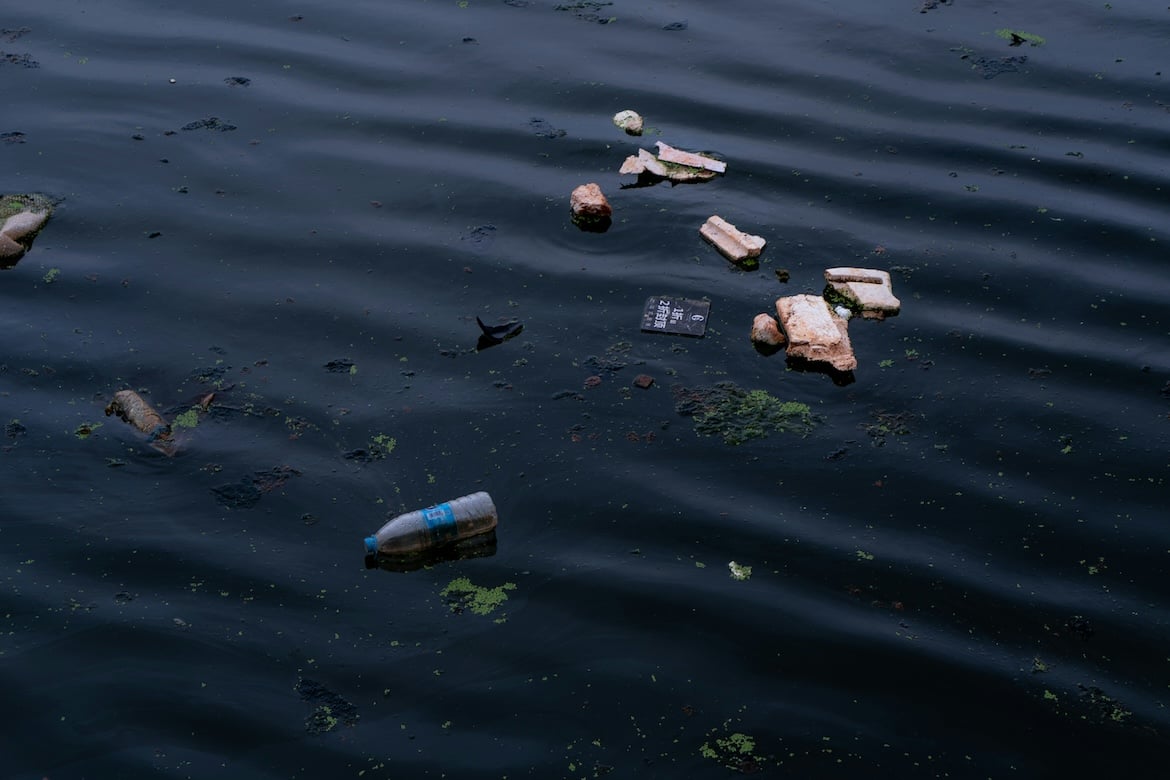This week’s list of top data news highlights covers July 19, 2025 to July 25, 2025 and includes articles on cleaning polluted waterways with robots and estimates the age of ancient Latin inscriptions with machine learning.
1. Controlling Devices with Electrical Signals
Meta has developed a wristband that lets users control their phones or computers without touching them, by detecting the electrical signals sent when they intend to move a finger. The device collects these signals from the forearm and uses AI to interpret them, translating intention into actions like moving a cursor or opening an app. The technology could also offer a new way for people with limited mobility to interact with digital devices.
2. Swapping Batteries Autonomously
UBTech Robotics, a humanoid robotics company based in China, has developed a bipedal robot capable of replacing its own battery. The robot has internal sensors, and when it detects low charge levels, it uses its robotic arms to remove its rear-mounted battery, deposit it in a charging dock, and install a fully charged unit. This demonstrates real-world potential for uninterrupted, round-the-clock deployment in dynamic industrial environments.
Researchers at Hong Kong University of Science and Technology in China, have developed an AI-based imaging system that can create high-resolution 3D models of bones using just two to four standard X-rays. The system uses deep learning algorithms to reconstruct the shape and structure of the bone in three dimensions, dramatically reducing the need for full CT scans. As a result, patients are exposed to up to 99 percent less radiation.
Swarm Biotactics, a defense robotics startup in Germany, has equipped live cockroaches with miniature backpacks containing neural stimulators, sensors, and secure communication tools that allow operators to remotely steer the insects and collect real-time visual and environmental data. Electrical pulses are sent to specific nerves to guide their movement, while onboard cameras and sensors transmit data wirelessly back to a central system for analysis. The setup enables controlled exploration of spaces that are otherwise difficult or dangerous for humans or machines to enter.
5. Cleaning Waterways with Robots
RanMarine Technology, a robotics company based in the Netherlands, has developed WasteShark, an AI-powered floating vessel that autonomously collects surface debris and monitors water quality. It uses sensors to measure environmental indicators like temperature and pH, cameras to detect and track floating waste, and an AI navigation system to steer the vessel through waterways and avoid obstacles as it guides litter into its onboard collection bin.
Researchers at Aberystwyth University in Wales have developed a mobile app that helps farmers detect potato blight, a fast-spreading fungal disease that can wipe out entire crops. Farmers photograph their plants using a smartphone, and the app uses image recognition to spot signs of infection that aren’t yet visible to the human eye. It then provides an instant, location-aware diagnosis. Because blight causes up to 20 percent of global potato yield losses, early detection helps farmers protect their harvests while reducing the need for widespread pesticide use.
Cedars-Sinai, a nonprofit healthcare organization based in Los Angeles, has developed CS Connect, an AI-powered virtual care platform that offers 24/7 healthcare support. This system uses algorithms trained on medical records and symptom data to guide patients through chat-based triage, generate personalized treatment recommendations, and summarize cases for physicians, reducing intake time and easing administrative burden.
Middlesex Health, a nonprofit healthcare system based in Connecticut, has introduced virtual reality headsets in its emergency departments to reduce pain and anxiety in pediatric patients. Children can choose immersive videos, like rollercoasters or underwater adventures, uploaded from a parent’s phone, and watch them through a VR headset during stressful procedures such as stitches or scans.
9. Digitizing Chemistry at Scale
Chemify, a technology company based in Scotland, has opened Chemifarm, a fully automated lab designed to speed up the discovery of new medicines and materials. The facility uses AI to plan chemical reactions, robots to carry them out, and a large digital library of tried-and-tested chemical steps to guide the process. By combining these tools, Chemifarm can design and produce new molecules with little human input, making the process faster, more efficient, and less wasteful than traditional methods.
10. Dating Ancient Inscriptions
Google’s DeepMind has developed Aeneas, a machine learning model that helps historians estimate when and where ancient Latin inscriptions were written. Trained on over 500,000 records from major Latin inscription databases, the model analyzes language and historical clues to suggest likely dates, fill in missing text, and detect geographic patterns. In one example, it correctly dated the Res Gestae Divi Augusti—Emperor Augustus’s first-person account of his rule—to shortly after his death in 14 CE.

